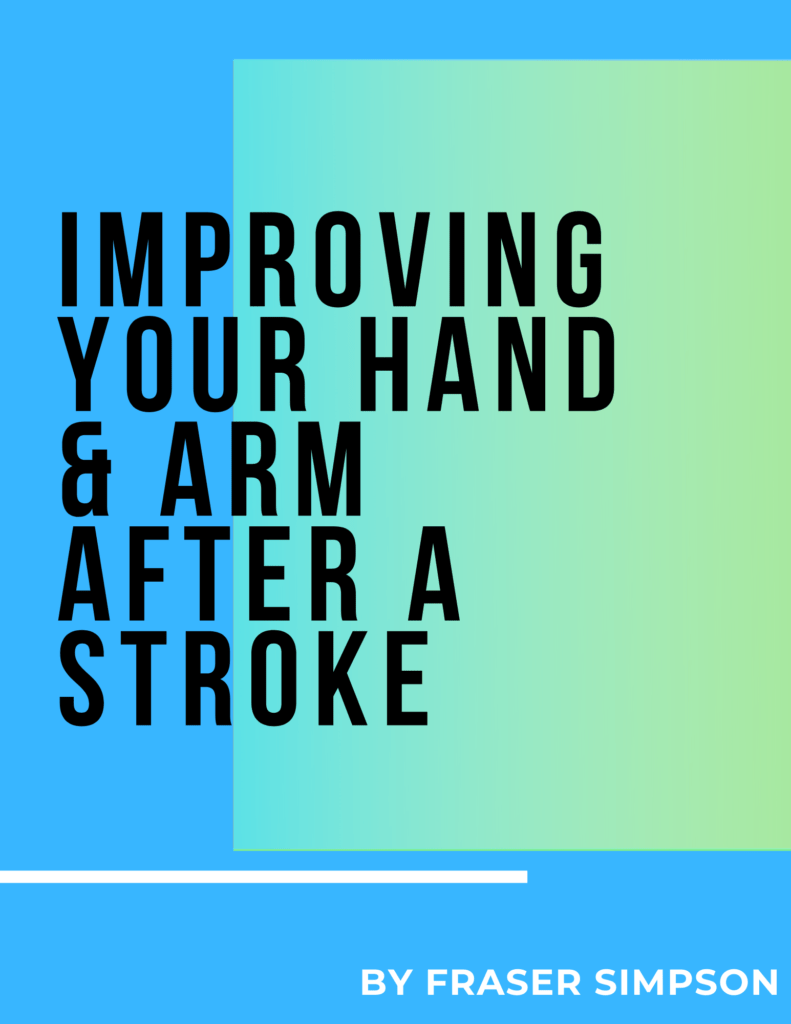If you have had a stroke that has affected your hand and/or arm, you are not alone. Hand and arm problems are common after stroke. They typically occur when the stroke affects the part of the brain responsible for relaying messages to and from the arm and hand. Arm and hand problems can be related to weakness, changes in sensation such as feeling numb or tingly, problems with tone which can feel like tightness, or difficulty making fine controlled movements.
How do arm and hand problems affect a stroke survivor?
It is possible that the arm or hand problems mean it’s difficult for you to do everyday things like eating, washing, driving or hobbies. It may have made you more reliant on others, making you feel like you have lost some of your independence. These difficulties in turn can affect how you feel about yourself. These are common concerns for a lot of people after their stroke.
When do you make the best recovery from stroke?
Stroke survivors tend to see quite a lot of recovery in the first three months after their stroke but then recovery can slow down. Historically, stroke survivors were told that they should not expect to see much improvement beyond these first three months. Thankfully, things have now improved to give hope for stroke survivors – we now know that natural recovery beyond three months can be improved by different things, including rehabilitation. So there is hope out there!
How do I get my arm and hand moving again?
Recovery of arm and hand movement depends on different things including what your arm movement was like after your stroke and how much you are able to commit to doing exercises. There is good quality evidence to support the use of a range of different rehabilitation plans including constraint induced movement therapy, mental practice, repetitive task practice, and mirror therapy. Physiotherapists use these different approaches as part of a tailored programme along with relevant stretching and strengthening techniques. Stroke survivors who get the most out of their arm and hand rehabilitation tend to have important goals to work towards. Do you have a goal that you want to work towards, but your arm or hand is currently stopping you? Get in touch with your Physiotherapist to discuss whether a programme of arm and hand rehabilitation may help you achieve your goals.
More about arm and hand rehabilitation
Why am I wearing an oven glove?!
What does an oven glove have to do with rehabilitation I hear you say?! Well it turns out that popping an oven glove on your unaffected hand can help to improve your affected hand. This is part of a treatment called ‘constraint induced movement therapy’. We know that restricting use of the unaffected hand means that stroke survivors use their affected hand more often. When coupled with a tailored exercise programme from your physiotherapist, and practice completed every day at home each day over a 2-3 week period, stroke survivors can often see their hand and arm move better and it helps them with everyday activities that were previously difficult. This takes a lot of work at home so some people find they are not able to commit to doing all of the exercises.
Picture this
Did you know that just by imaging a movement you can help to improve your arm and hand? Mental imagery of arm and hand movements may stimulate pathways in the brain that help with hand and arm movement, in turn making it easier to move the arm and hand. It’s not clear if mental practice alone will help improve your arm, but we know that working on a physical rehabilitation programme alongside mental practice can really help improve your arm and hand movements.
Use it or lose it
You’ll be familiar with the old adage ‘use it or lose it’. Well, the same applies to the arm and hand. We know that people who use it more and practice daily tasks are more likely to improve their hand and arm function. This depends on how your arm was affected by your stroke so it isn’t something that is suitable for everyone.
Mirror mirror on the wall
Mirror therapy involves placing the affected arm behind a mirror on a table in front of you. You move your unaffected arm and see its reflection in the mirror – your brain thinks this is your affected arm moving and it can help your brain to remember what it is like to move the affected arm. Like a lot of arm treatments, this therapy depends on your arm movement and how your stroke affected you and your body, but as for all of the different treatments described here, speak to your Physiotherapist about improving your arm function and what you can do to help yourself get back movement in your arm and hand.
from ‘the Neurophysiotherapist Team at Simpson Physiotherapy Ltd.



